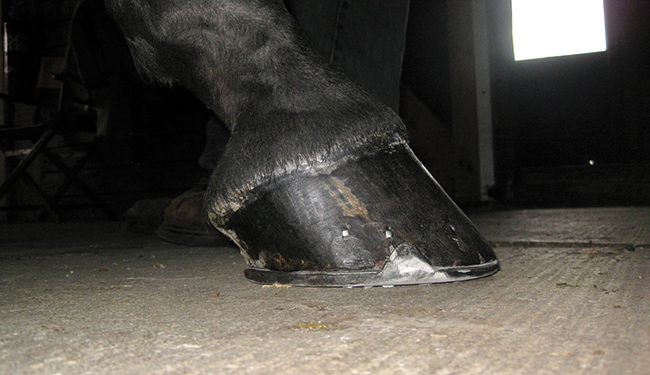American Farriers Journal
American Farriers Journal is the “hands-on” magazine for professional farriers, equine veterinarians and horse care product and service buyers.

In most endeavors, success comes down to attention to detail.
This is so true in the farrier profession when trimming and nailing tolerances can be very small. Before you work on any horse, it’s a good idea to do a little investigating and determine whether everything looks OK or, if it’s a new horse, to gain information on what you are dealing with.
When examining a horse’s foot, there are external warning flags that will manifest themselves in the wall, sole and frog that provide evidence of internal problems within the hoof capsule. If you see anything that looks suspicious, you should bring it to the attention of the owner, who then can call the veterinarian. Don’t attempt to be the Lone Ranger and try to fix it yourself. It’s very important that this information gets transmitted quickly. Cooperation between the owner, trainer, vet and farrier is crucial for successful resolution of foot problems.
Let’s take a look at how to identify the most common occurrences; however, be aware that this list is far from complete.
Description of the external foot. The first thing to examine is whether the horse’s hoof is an ideal proportion to its size. Crossbreeding sometimes produces some unexpected size and conformation surprises. Look for the “Goldilocks foot” — one that isn’t too big nor too small, one that isn’t too round and one that’s not too wide, nor too narrow. Unfortunately, this foot isn’t in the majority.
Next, scrutinize the wall. It’s…